The Isle of Man is a land of green glens, purple mountains and rugged shores, where ancient tales are still told. Wildlife, historical sites and cosy fishing villages abound on this humble island in the Irish Sea.
Manx Gaelic, the island’s native tongue, is thriving and there is a vibrant Manx cultural scene. Nature abounds in Manx folklore too, with shape-shifting wrens, curlews saving lost saints and glittering herring kings, and the landscape is full of intriguing reminders of the island’s colourful past: Viking ship burials, Neolithic stone circles and coastal forts.
Discover how to get to the Isle of Man (ferry or fly?), the best things to see and do, and places to stay with our holiday guide to the island.
Looking for more holiday ideas? Check out our guide to the Peak District, the best islands to visit in the UK, and perfect mountains for beginners.

How to get to the Isle of Man
Most people travel to the Isle of Man on the Steam Packet ferry, which allows you to tour the Isle of Man in your own car. The Steam Packet Company operates services to Douglas from Heysham in Lancashire, Liverpool, Dublin and Belfast. The journey from Liverpool takes around 3½ hours with fares varying. At 192 years old, it’s the world’s oldest continuously operating passenger shipping company.
Contrary to popular belief, there’s no ban on caravans in the Isle of Man, although you do have to apply for a permit from the Island’s Department of Local Government and the Environment with details of your stay.
You can fly to the Isle of Man from more than 20 airports across the UK, and you can hire a car from the airport at Ronaldsway or use the extensive public transport network.
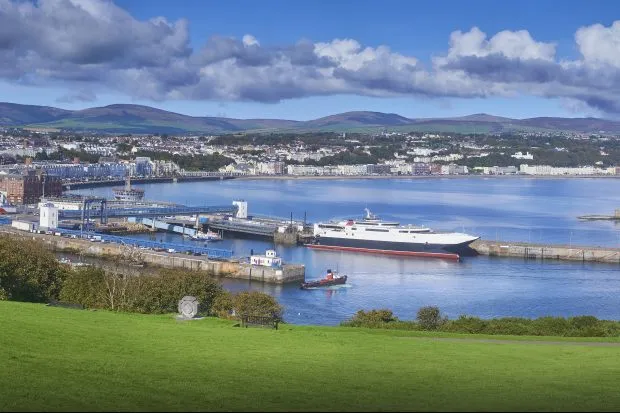
Is the Isle of Man in the UK?
The Isle of Man isn’t part of the UK or the European Union. It is a Crown Dependency of the UK – a self-governing possession of the British Crown, such as Jersey and Guernsey – meaning it has its own government and laws, but it also has a close relationship with the UK.
Despite not being part of the UK, there’s a familiar feel to the place. The islanders drive on the left side of the road; there are British-looking buses, and the road signs and traffic lights are the same as on the mainland.
But there is one major difference. The pace of life in the Isle of Man is calmer, more laid back. There’s no need to rush here, as it takes under an hour to get pretty much anywhere on the island. Another difference is the prevalence of the Manx language, albeit more in the written form. A legacy of the early Irish settlers, Manx has its origins in Gaelic and is an important part of the island’s Celtic culture and heritage.
The only invaders these days are the thousands of tourists who make the crossing to experience the island’s unique charm and atmosphere. And the couple of bikes that pop over, too. (Up to 15,000 bike owners bring their machines over to the island for the TT).
Best islands to visit in the UK
Discover Britain's most beautiful islands, from the majesty of the Isle of Skye in Scotland and the tranquility of the Channel Islands to Pembrokeshire's famous wildlife-havens of Skomer, Ramsey and Caldey.
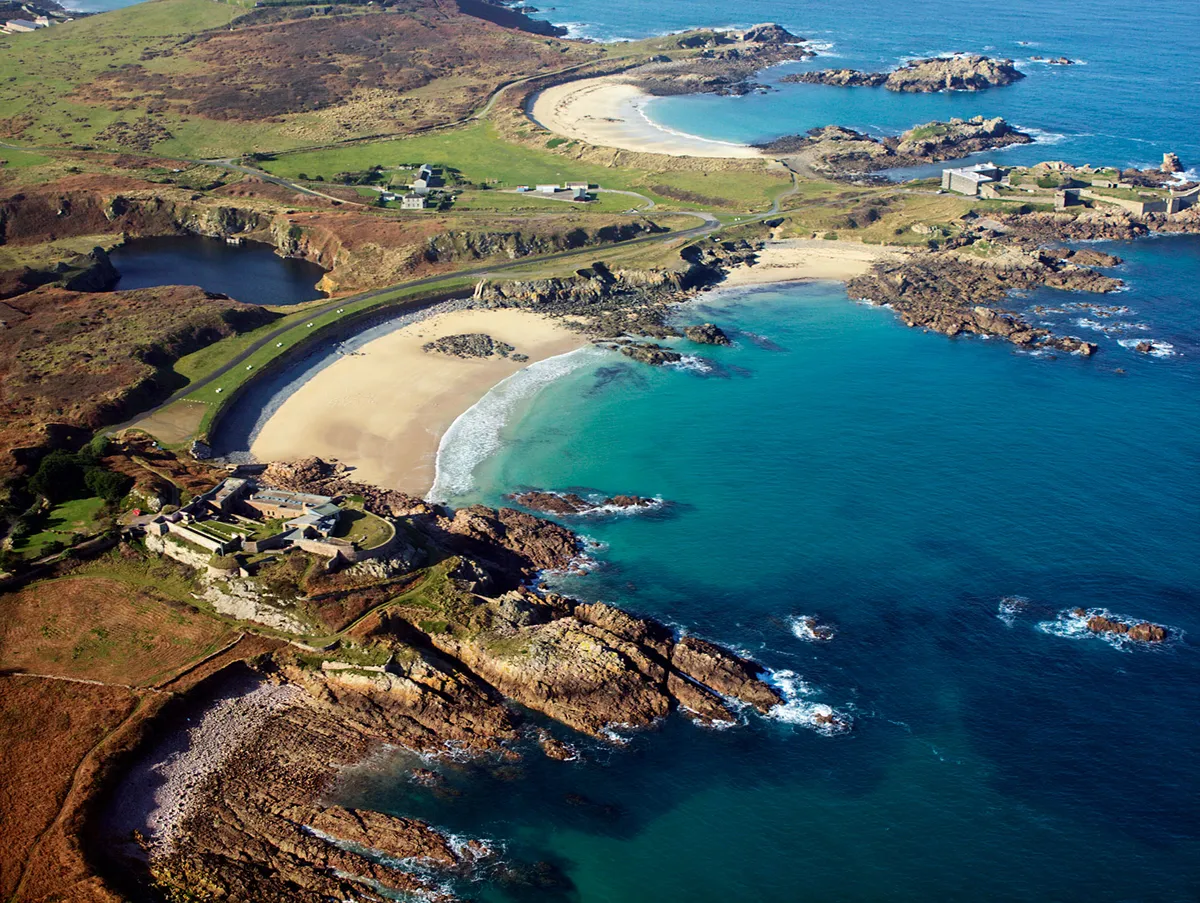
Isle of Man population
The Isle of Man has a population of around 85,000 people.
Where is the Isle of Man?
The Isle of Man is a small island in the middle of the Irish Sea. Some 50km long and 20km wide, it’s just over half the size of the Isle of Wight.
Legend has it that we owe its position to Irish giant Finn Mac Cuill. He’s said to have hurled a handful of earth at a rival giant over in Scotland. The earth fell rather short of the intended target, dropping into the Irish Sea to form the island we see today. It must have been a big handful.
Isle of Man map
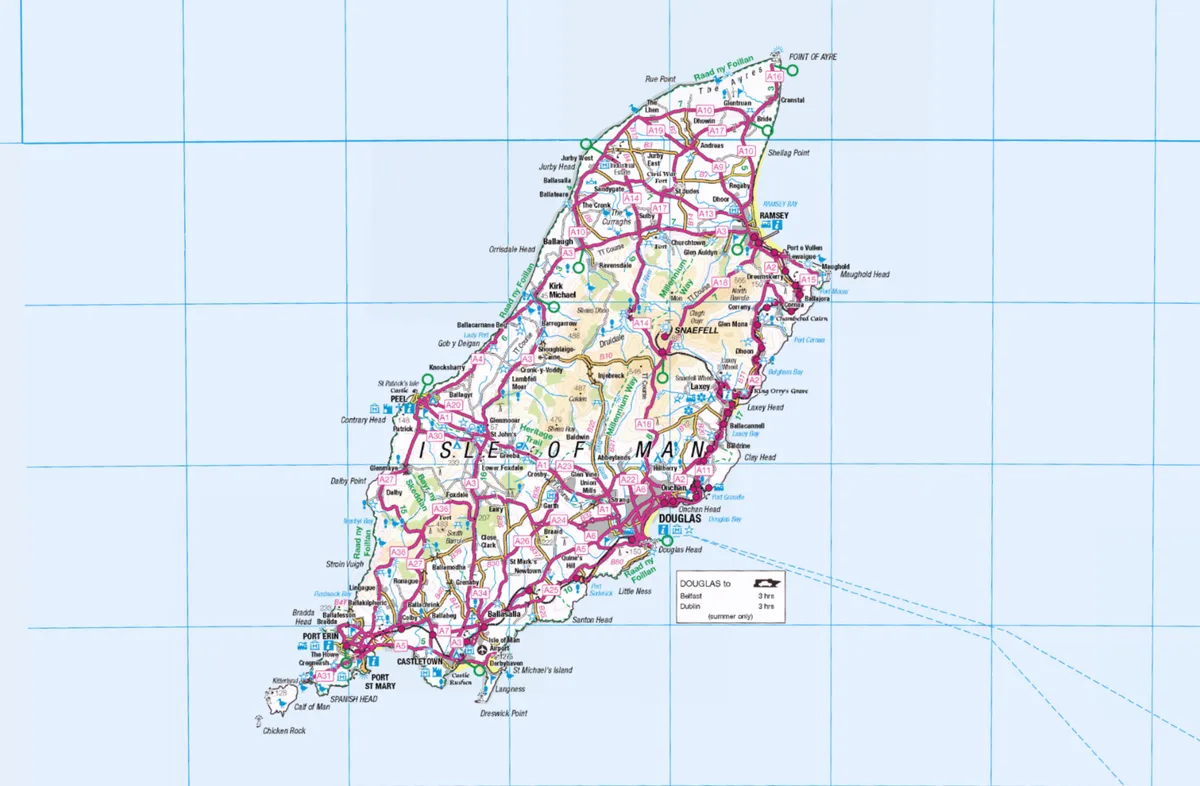
Things to do on the Isle of Man
Boat trips
Sail from Port St Mary to the Calf of Man and on the way take in the Sugarloaf stack, a noisy spectacle of nesting guillemots, razorbills and kittiwakes. Look out for seals, harbour porpoises, minke whales, Risso’s dolphins and basking sharks. The Calf is uninhabited except for seasonal wardens at the bird observatory, which has been active for over 60 years. The Calf’s popularity as a stopping-off point for migrating birds has meant that more than 200,000 birds have been ringed over the decades. Steven Clague runs trips in his boat, Scraayl (which means Manx shearwater in Manx); call 07624 490615.
Diving and snorkelling
Discover Diving offers single dives for qualified divers or snorkel trips and diver-training for beginners, plus full dive charter boats including accommodation.
Heritage railways
The Manx Steam Railway and the Manx Electric Railway run beautifully preserved steam trains and electric trams (check online for timetables) and are a great way to see the Manx countryside and stretches of coastline from a different perspective.
There are plenty of attractions other than the landscapes and nature. Around the coast from the Calf (the tiny island off Man’s southern tip) is the terminus to the Isle of Man Steam Railway at Port Erin. From here is one of the best scenic rail journeys in the world. Using original rolling stock and locomotives, the 15-mile trip steams from the west to the modern capital Douglas. En route, a stop at the former Manx capital of Castletown to see the splendidly preserved medieval castle. Transfer across Douglas to the Manx Electric Railway, and Laxey is the stop for the Isle of Man’s most iconic sight – The Lady Isabella – otherwise known as the Laxey Wheel.

The Manx Glens
On a bright spring morning, or a sultry summer’s day, it’s worth exploring one of the Isle of Man’s 18 National Glens. These deep green valleys plunge from hill to coast, winding through waterfalls, caves and rock pools, all kept in a semi-natural state by the Manx Government. Many first became tourist attractions in the Victorian era. Glen Groudle, for example, once boasted a small zoo, dancefloor and bandstand. Other notable glens include Glen Helen, with stately trees; Glen Maye, with lush green plant life; and the steep Dhoon Glen, with 190 steps, and a 40m waterfall.

Basking shark tours
Basking sharks can strain up to 2,000 tonnes of water per hour. These zooplankton-feeding sharks can reach up to 12m in length and weigh over six tonnes. They’re the second largest fish in the world. Witness them in action on a Manx Sea Life Safari boat trip from Peel on the Isle of Man’s west coast.

Yn Chruinnaght Celtic Festival
Yn Chruinnaght in Peel is an annual gathering to celebrate the island’s Celtic heritage with music, language and other cultural events. It runs from 24–30 July 2023.
Manx culture
Culture Vannin’s website has a wealth of information on the Manx language, music, heritage and all aspects of the island’s culture.
The National Folk Museum, Cregneash
If you are only on the island for a day, head to the south-west to visit The National Folk Museum at Cregneash. It shows what life was like in a 19th-century Manx crofting community, with demonstrations of traditional farming, wool dying, weaving, blacksmithing and more.
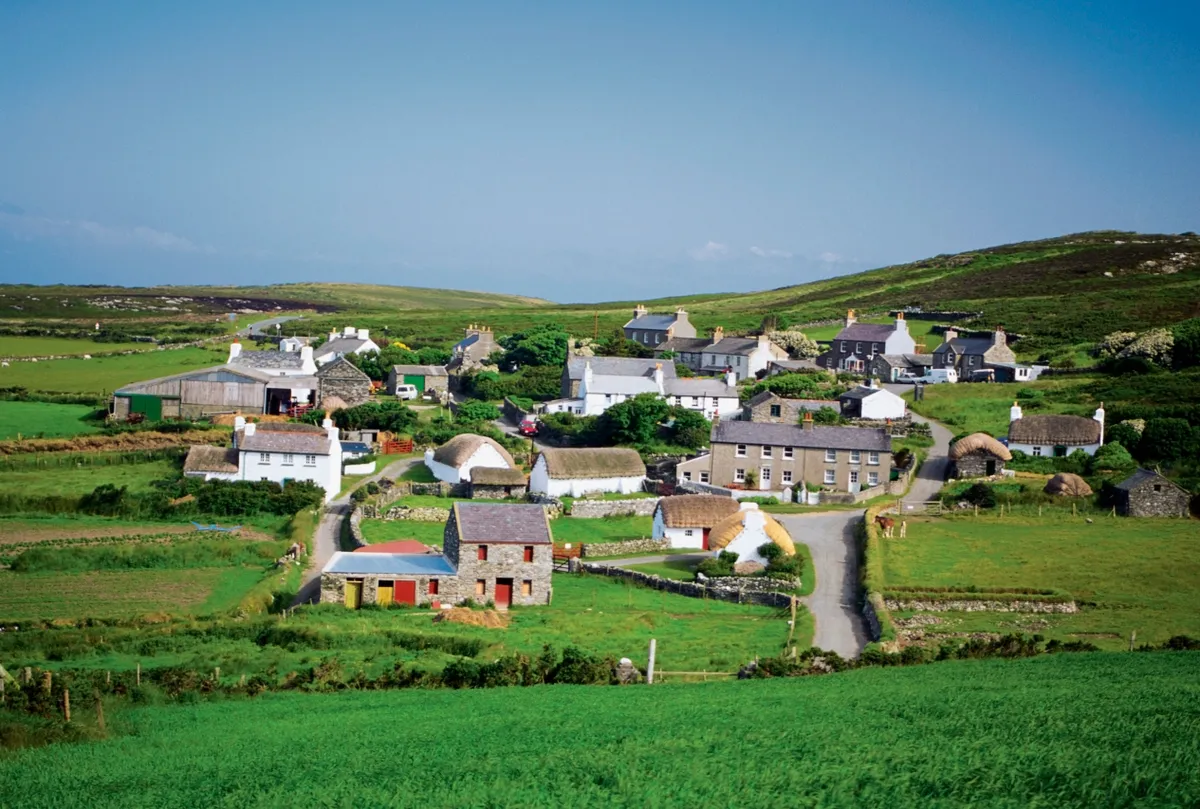
The House of Manannan, Peel
When the weather is wet, The House of Manannan in Peel is hard to beat. Using state of the art displays, the centre explores the island’s Celtic, Viking and maritime heritage and traditions. The building itself is based on Manx vernacular architecture. There’s enough here to captivate all ages.
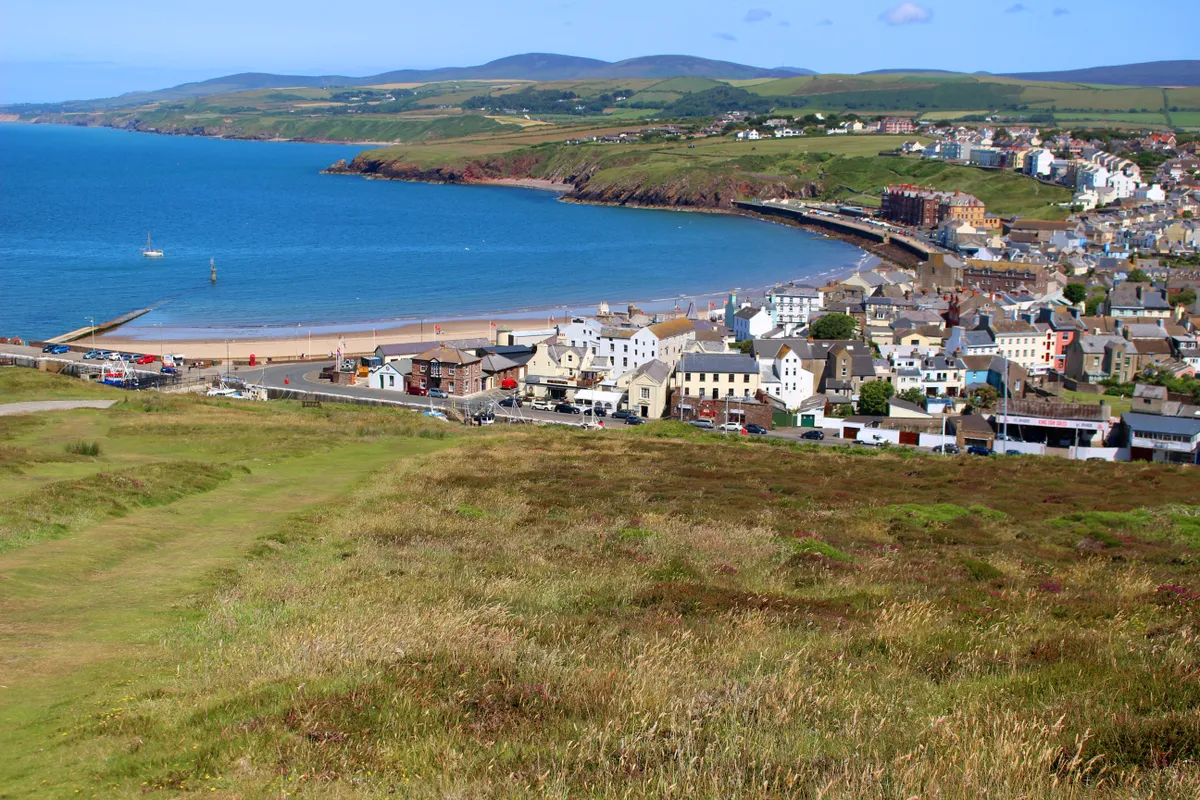
Isle of Man walks
Most of the tourists who visit the Isle of Man are here for the walking. Despite being only around a third of the area of Greater London, the Isle of Man boasts possibly the most varied and exciting walking anywhere within the British Isles. With more than 40 percent of the island uninhabited, there’s plenty of space to feel at one with the great outdoors.
It’s often said that Man is like the British Isles in miniature. Imagine the craggy, gnarled cliffs of the north Cornwall coast, the undulating hills of the Peak District and the sandy beaches of south-east England in one compact package, and you’re there.
Snaefell
A must for walkers is the mountain of Snaefell – which is old Norse for ‘snow hill’. With a height of 620m (2,034ft) it’s mid-table in comparison to Wainwright’s Cumbrian fells; but no Wainwright walk can offer the view from the top. On a clear day, you can see England, Ireland, Scotland and Wales. The summit is certainly walkable, but in common with Snowdon, most visitors travel to the top using the Snaefell Mountain Railway, which has been commuting up and down since 1895. Snaefell rises up from the central belt of the island, along with 10 of the island’s 12 highest peaks. If you’re happy walking Haystacks and Hartsop Dodd in the Lake District, this area is for you.

Millennium Way
The there's the Millennium Way, one of four long-distance footpaths on the island. It travels for 26 miles through the central belt, passing peaks such as Carragham, Beinn-y-Phott and the side of Snaefell on its way from north to south.
Manx Coastal Path
One of the other long-distance footpaths is perfect for lovers of the sea – the Manx Coastal Path, known as the Raad ny Foillan, or The Way of the Gull. Devised in 1986, the path hugs the shoreline and comprises 95 miles of beaches, harbours, hills and cliffs. And of course the walk can be broken into sections easily accessible at both ends by public transport.
Port St Mary to Port Erin
One of the very best walks on the island is along the coast from Port St Mary to Port Erin. Walk this and you’ll be rewarded with sheer cliffs, spectacular scenery and water wildlife aplenty. Traversing over land with names like Spanish Head and Burroo Ned, the walk passes by the excellent Sound Visitor Centre and Restaurant for a stop en route. It’s not the shortest, at just over five miles, and in some sections there are some challenging rises and falls, but it is waymarked along the length as it’s part of the Manx Coastal Walk – and it has a steam train ride back to the start! (Regular Isle of Man Steam Railway services start in mid-March).

Port Erin to the Sound
This walk takes in some spectacular coastal scenery and the opportunity to see big groups of choughs, particularly towards the Sound. Return via Cregneash village museum and Meayll Stone Circle. Moderate difficulty. Sheer drops and narrow sections, so unsuitable for small children.
Port Lewaigue to Maughold Head
Start at Port Lewaigue and follow the coastal footpath to Maughold Head. Fabulous views over Ramsey Bay Marine Nature Reserve and a large cormorant colony. See Celtic and Viking stone carving in Maughold churchyard. Moderate difficulty.
Eary Cushlin to Lag ny Keeilley
Park at Eary Cushlin and walk down a stunning stretch of coast to an early Christian chapel (known as a keeill in Manx Gaelic). Moderate walking but it does involve a long climb back up. Be sure to check for ticks at the end of your walk.
Isle of Man TT
During four weeks of the year, the Isle of Man throbs to the sound of motorcycles as thousands descend on the island for the TT and Manx Grand Prix.
The TT (Tourist Trophy) started in 1907, when the Tynwald passed a law allowing the closure of public roads for racing – all at a time when cars were limited to 20mph in the UK. The Manx Grand Prix is slightly younger, starting in 1923, and both are run over the famous Snaefell Mountain Course.
The festivals are a celebration of motorcycling, with bike rallies, gatherings and displays. During the two events, the island’s population almost doubles; that makes finding accommodation quite tricky, and there are countless road closures and travel disruption, so unless you are a motorcycle fan, the weeks are best avoided for visiting.

What is the weather like on the Isle of Man?
The Isle of Man has a bit of a reputation for being wet (you don’t get a landscape this lush without rain) but the amount can vary across the island. There is less rainfall in the north and along the south coast, but plenty along the central hilly sections, and the heights of Snaefell are often engulfed with cloud. If you’re used to the Lakes, you’ll know what to expect. What isn’t well known is that the island often hosts several different micro-climates at same time. So if it’s raining around Peel, simply drive across to Ramsey and you could well be bathed in sunshine.
Isle of Man wildlife
It is often said that the Isle of Man is the British Isles in miniature, and one of the best things about the island as a wildlife destination is the diversity of landscapes, above and below water. Wherever you stay, you’re never far from high slate cliffs, sandy beaches, upland heath, sheltered glens, estuaries, saltmarsh and grasslands.
There are rich marine habitats offshore, protected in 10 Marine Nature Reserves, and the shores are rockpooling heaven, with cushion star starfish, shore crabs and jewel anemones easily accessible to young explorers.

Off the west coast there are soaring underwater cliffs cleft with deep, dark gullies; vast kelp forests anchored to the seabed with dragon-fist holdfasts; craterous rocky reefs; horse-mussel beds and meadows of lustrous seagrass. These habitats support conger eels, starfish, lobsters, minke whales, dolphins, octopuses, porpoises and seals all thrive in these fertile waters.
Look out too for the slate-grey bodies of sunfish bathing on the surface and their shark-like dorsal fins. Mola mola are the heaviest bony fish in the world; the largest ever recorded was as tall as a double-decker bus.
The Isle of Man is perhaps best known for its basking sharks. Mouths agape and gills billowing, these giants can be seen on boat tours from Peel and a number of other destinations. These zooplankton-feeding sharks can reach up to 12m in length and weigh over six tonnes. They’re the second largest fish in the world.
More holiday ideas
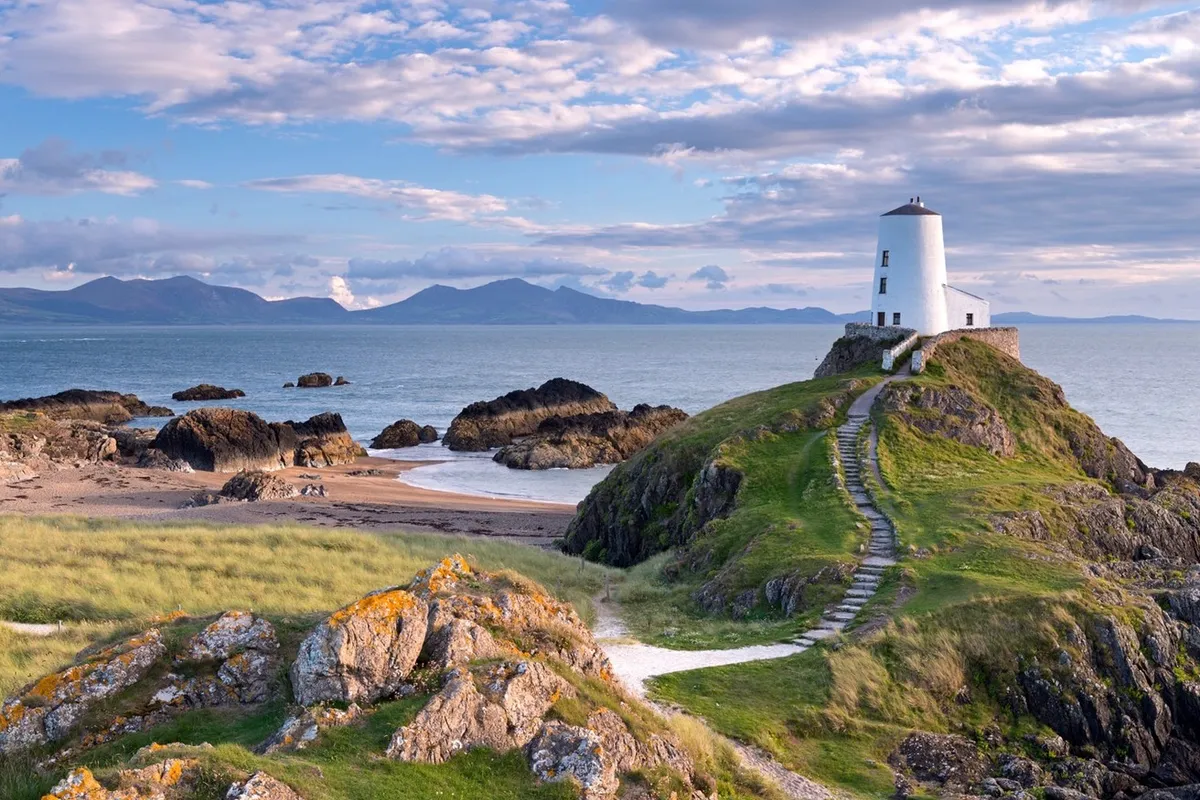
Places to stay
Towns
Ramsey
In the north on the shores of Ramsey Bay Marine Nature Reserve, Ramsey has a good high street, a fish shop supplied by local fishers, farmers’ markets on a Saturday, a wonderful book shop and a quayside full of pubs.
Douglas
The capital of the Isle of Man has a long history of tourism, with a seafront still dominated by Victorian hotels. It provides a central base to explore, using the bus network or heritage railways.
Port Erin
This traditional seaside holiday destination in the south-west of the island has great access to coastal walks and a sheltered bay for swimming, paddleboarding, sailing and kayaking.
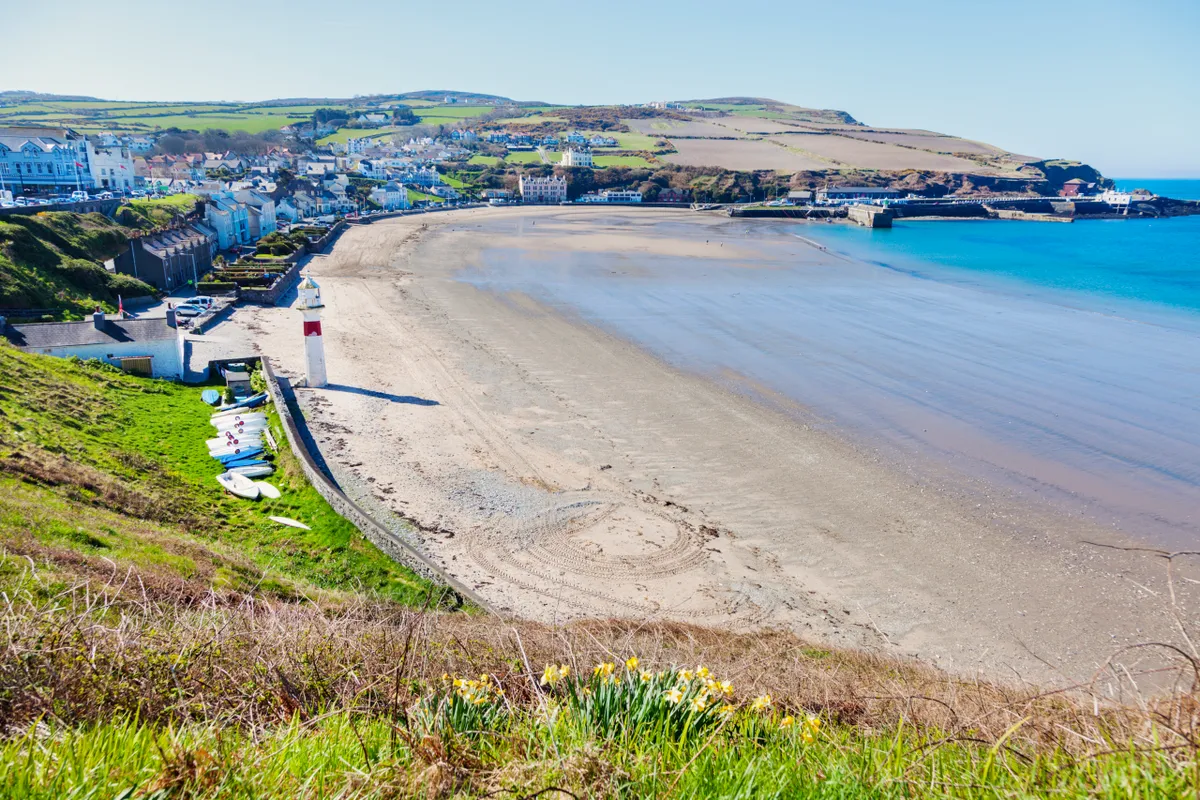
Hotels and B&Bs
Ballacowell B&B, Ramsey
Ballacowell Bed & Breakfast has a peaceful rural location and is a good base for exploring Ballaugh Curragh Ramsar wetland, perhaps the best place to see the island’s wallabies. From £60 B&B.
Baie Mooar House Boutique B&B, Ramsey
For views across Ramsey Bay Marine Nature Reserve and a delicious Manx breakfast, try Baie Mooar House, a short distance from the town centre. From £130 B&B.
The Mannin Hotel, Douglas
The Mannin is a stylish new hotel just off Douglas promenade with its own bar and restaurant that offers a good central location for exploring the island. From around £120 bed and breakfast.
The Arches, Port Erin
The Arches is a B&B, yes… but that’s like saying a Ferrari is a car. It’s a five-star boutique experience with spa baths and a heated indoor swimming pool – perfect after a long walk or exploring session. Port Erin, IM9 6PP, 01624 823725.
Ballachrink Farm, Bride
On a farm with uninterrupted views to Barrule and Snaefell, Ballachrink is a peaceful and spacious farmhouse. It’s a great base for the north of the island, with excellent walking and birdwatching. Bride, IM7 4AP, 01624 880364.

Where to eat
14North, Douglas
Located in a 19th-century former timber merchant’s house, 14North is a family-run restaurant dedicated to showcasing the finest produce of Manx farmers, fisherman and artisans. 14 North, Douglas, IM1 4LE, 01624 664414.
14north.im
The Swiss House, St Johns
The Swiss House certainly looks different. Inside, the delicious food is cooked on a charcoal grill. Located in the stunning surroundings of Glen Helen, with Rhenass waterfall close by.. St Johns IM4 3NP
01624 801657.
Fish and Chips, Peel
Once bought, it’s a quick walk to the top of the harbour to sit and eat your fish and chips while watching the boats.. Quayside Fish and Chip Takeaway, Peel, IM5 1AR, 01624 845460.
Manx Kippers, Peel
They have been the island’s delicacy since around the 1870s, and once smokehouses could be found all around the island. Today, the two remaining curers are based in Peel – the spiritual home of the kipper. Many restaurants on the island serve them, too. Or you can have them posted to you direct – order from manxkippers.com

The Sound Café
The Sound Café is the perfect stop-off when walking the southern coastal paths. Enjoy beautiful views of the Calf of Man and year-round seal watching with the comfort of a hot chocolate in your hand. You can also drive there or take the bus.
The Boatyard, Peel
The Boatyard in Peel, still an active fishing town, is right on the harbour and has fresh local seafood and great desserts – the place for a special meal.
The Fyn Bar, Ramsey
The Fyn Bar next to the tram station in Ramsey is home to Manx gin distillers Fynoderee (named after a Manx mythical creature) and is the place to go for a delicious and intriguing folklore-infused cocktail.
Legend and folklore on the Isle of Man
Even now, visitors soon discover that folk tales and superstitions abound on Man. As you approach the capital Douglas from the airport, remember to say ‘hello’ to the little people when crossing the Fairy Bridge, or your trip might not go as planned. Oh, and watch out for Moddey Dhoo, a black hound that reputedly haunts Peel Castle…
Another of the island’s legends gives the Isle of Man its name. The standard explanation is that it comes from the Manx Gaelic name for the island – Ellan Vannin – which translates as ‘The Island of Man’. However, the locals know it really comes from the ancient Irish sea god Manannan Mac Lir. It is said the heavy mist that sometimes covers the island is his cloak, protecting the land from invaders.
Britain's prettiest fishing villages
Escape to the coast for an idyllic break in a haven by the sea with our guide to the most charming fishing villages to visit in the UK.

Vikings on the Isle of Man
It’s a moot point whether the mist worked. Though it’s not known whether the Romans ever landed, the Irish certainly did, making the short hop across the water sometime in the seventh century – as so many do now. The first Vikings appeared at the end of the eighth century, and Man fell under Viking control in 1079. The island passed to the Scottish crown in 1266 and then to the British crown in 1764 – but it was never fully incorporated.
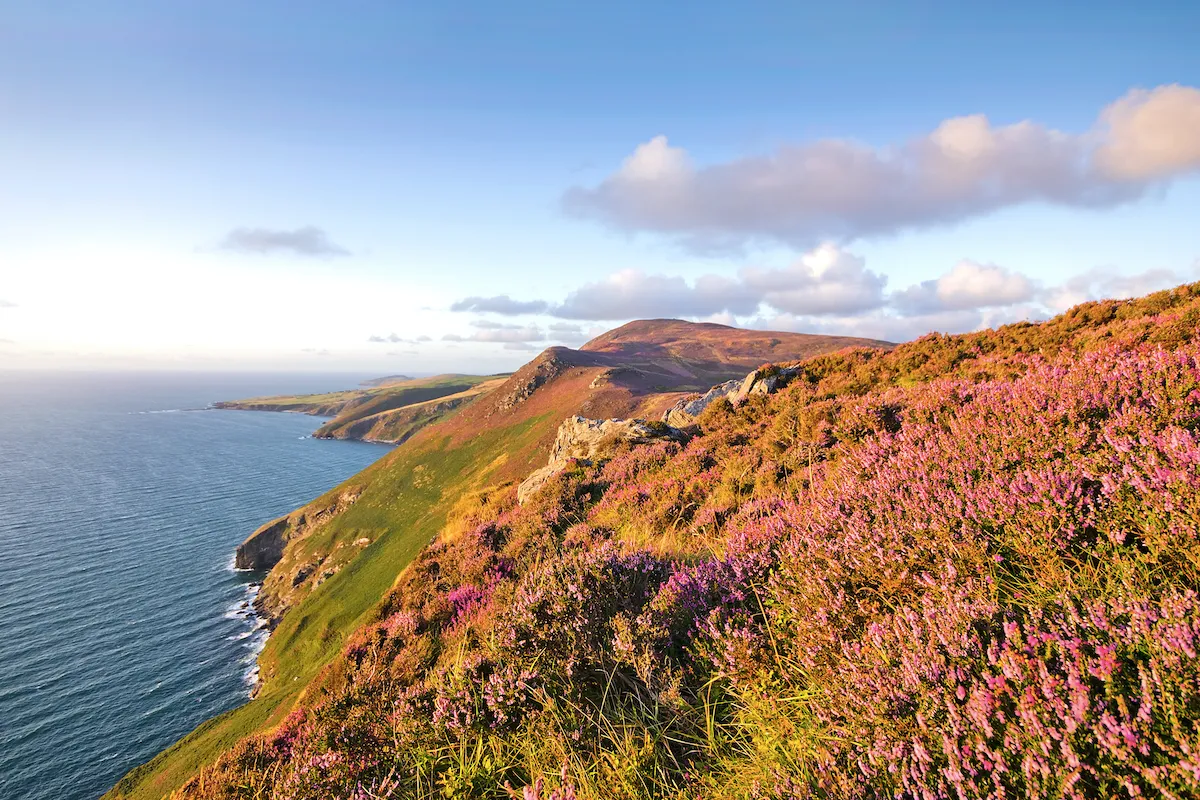
Why not treat yourself to a new weekend bag for your getaway? We've tried and tested some leading brands to find the very best choices.
